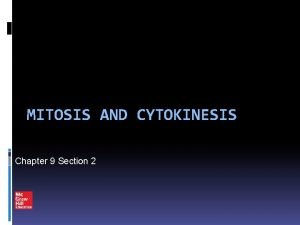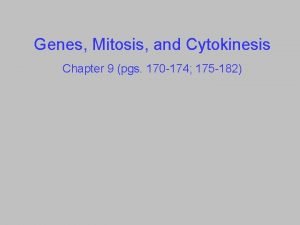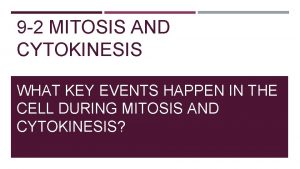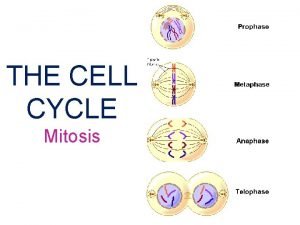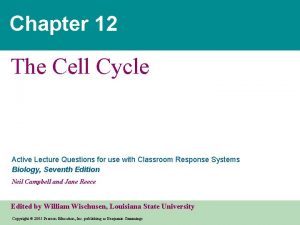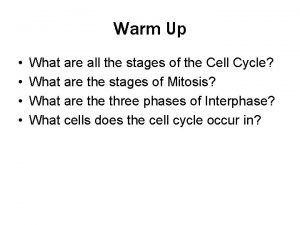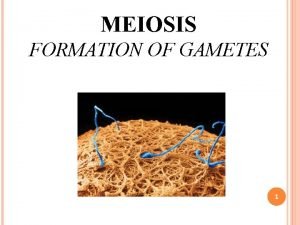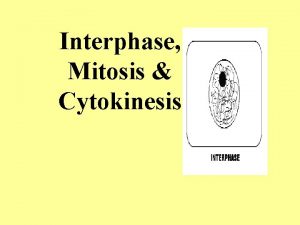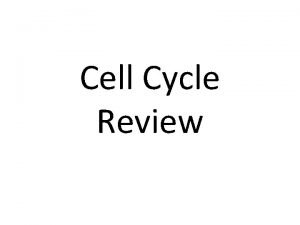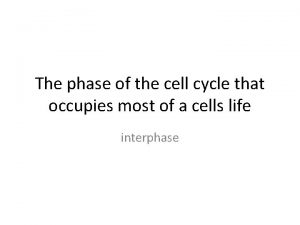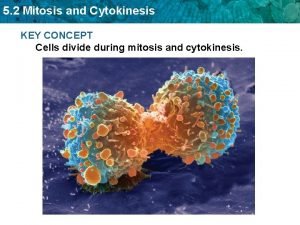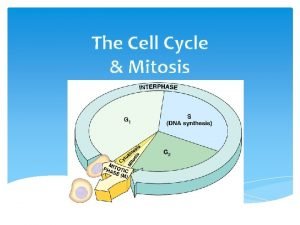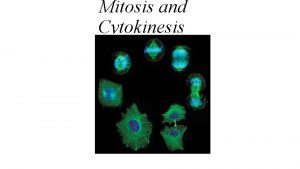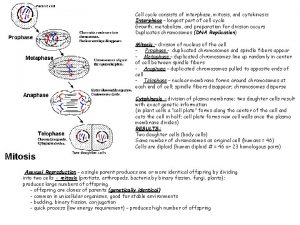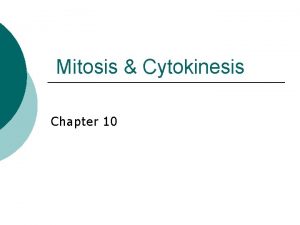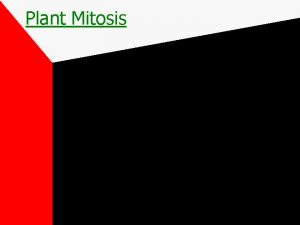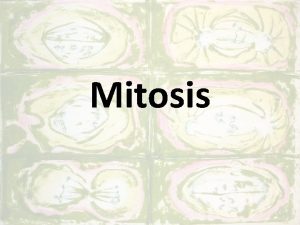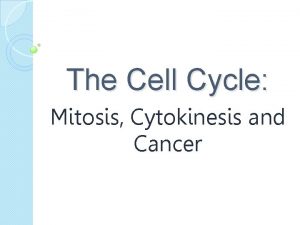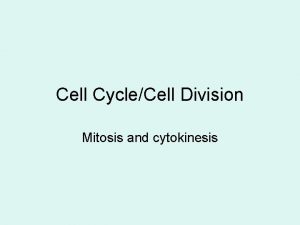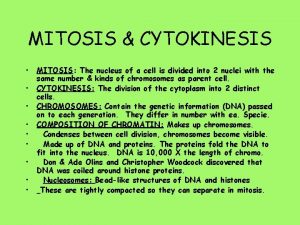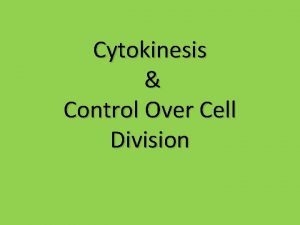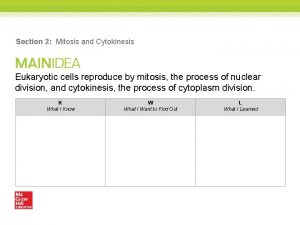Chapter 9 Section 2 Mitosis Cytokinesis Mitosis consists













- Slides: 13

Chapter 9 Section 2 Mitosis & Cytokinesis

Mitosis • consists of four stages

Prophase • the stage that immediately follows G 2 • the chromatin condenses into CHROMOSOMES • at this point, each chromosome is attached to its replica at a structure called the CENTROMERE and is known as a SISTER CHROMATID

Prophase • the NUCLEAR ENVELOPE and the NUCLEOLUS seem to disappear

Prophase • a pair of microtubule structures called CENTRIOLES migrates to the poles (ends) of the cell – which have another type of microtubules called ASTER FIBERS coming out of them (only in animal and most protist cells)

Prophase • another type of microtubule structures called SPINDLE FIBERS form in the cytoplasm and attach to the SISTER CHROMATIDS on both sides of their centromere and then attach to opposite poles of the cell • this is the longest stage of mitosis

Metaphase • the stage that immediately follows Prophase • the sister chromatids are pulled along the spindle fibers toward the CENTER/MIDDLE of the cell, and they line up on the EQUATOR of the cell • this is the shortest stage of mitosis

Anaphase • the stage that immediately follows Metaphase • the spindle fibers shorten, which pulls at the centromere of each pair of SISTER CHROMATIDS, causing them to separate into two identical CHROMOSOMES

Anaphase • the spindle fibers then move the one of each identical chromosome toward opposite POLES of the cell

Telophase • the stage that immediately follows Anaphase • the chromosomes at each pole of the cell decondense into CHROMATIN • two new NUCLEAR ENVELOPES form and the NUCLEOLI reappear

Telophase • the SPINDLE APPARATUS disassembles (some of the microtubules are used to build various parts of the CYTOSKELETON) • At this point, the nuclear material is divided, but the process of cell division in not yet complete • the cell has to go through CYTOKINESIS (the division of its cytoplasm)

Cytokinesis Animal Cells • uses microfilaments to constrict (pinch) the cytoplasm at an area called the FURROW and eventually splits the two cells apart

Cytokinesis Plant Cells • a CELL PLATE forms between the two daughter nuclei, then cell walls then form on either side of it
 Chapter 9 section 2: mitosis and cytokinesis answer key
Chapter 9 section 2: mitosis and cytokinesis answer key Chapter 9 section 2 mitosis and cytokinesis
Chapter 9 section 2 mitosis and cytokinesis Mitosis and cytokinesis images in order
Mitosis and cytokinesis images in order Plant cell mitosis
Plant cell mitosis Cytokinesis usually but not always follows mitosis
Cytokinesis usually but not always follows mitosis What happens during metaphase
What happens during metaphase Prophase of meiosis 2
Prophase of meiosis 2 Telophase 2 and cytokinesis
Telophase 2 and cytokinesis Interphase to cytokinesis
Interphase to cytokinesis What phase is
What phase is What occurs after cytokinesis is completed?
What occurs after cytokinesis is completed? Interphase to cytokinesis
Interphase to cytokinesis What is the cytokinesis phase
What is the cytokinesis phase Pmat mitosis
Pmat mitosis
